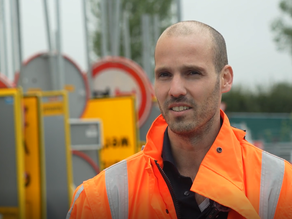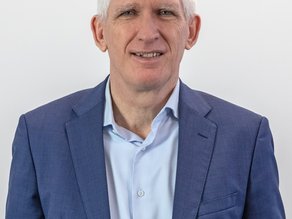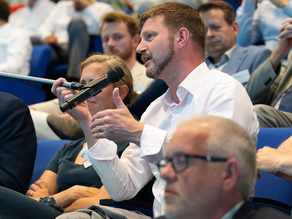Five questions for
David Anink
The Dutch Environmental Database Foundation (Stichting NMD) celebrates its five-year anniversary. The foundation was established in 2020, but work on environmental data for the construction sector goes back much further: Stichting NMD originated from the Building Quality Foundation (SBK), which laid the foundation for the current system from 2011 onward.

5 years Stichting NMD!
Over the past five years we have achieved a great deal and much has changed. We have grown significantly and important steps have been taken to make circular construction a reality. This brings us closer to a sustainable living environment, for today and for the future.
Several people have been closely involved in these developments and in the growth of Stichting NMD. Over a period of ten weeks we will share the perspectives of ten of these people through a short interview based on five fixed questions. In this way, we present ten perspectives on five years of Stichting NMD.
This week we have five questions for David Anink.
David Anink is Senior Consultant at W/E Adviseurs. He has been involved for many years in the development and application of environmental performance instruments in the construction sector. In his role, he focuses on translating sustainability ambitions into practical and well-substantiated methods for measuring environmental impact. With his broad experience in policy development, calculation methodologies and material-related issues, he makes an important contribution to the national system for environmental data.
1. How did you first come into contact with Stichting NMD?
At Stichting W/E adviseurs I developed EcoQuantum, in collaboration with the now-defunct consultancy IVAM. The calculation tools EcoQuantum and Greencalc were the predecessors of the environmental performance calculation method (MPG) and the Dutch Environmental Database, at a time when Stichting NMD did not yet exist.
Because harmonisation was needed, the owners of EcoQuantum and Greencalc merged the method and the databases and transferred them to the Construction Quality Foundation on 14 April 2010. I have continued to be involved in the MPG/MKI system ever since, in both the technical developments (as a member of the TIC) and the policy-related work. That is still the case today.
2. In your experience, what has changed the most in your work or in the sector over the past five years?
Sustainability has grown from a niche or an added extra into an essential aspect. It has been embraced by a large part of the market. Despite the policy-related challenges (including the lack of tightening of the environmental performance calculation for residential buildings and the limited verification and enforcement), the market continues to move forward. European obligations are at least as strong a driver.
A positive development is the recent attention for the existing building stock. The market has a strong need for more direction and facilitation (methods/data) from the government.
3. What change or development would you still like to see?
A clear and ambitious long-term objective from the government, pursued with consistency and continuity. The ministry must ensure requirements that continually challenge the market to build more sustainably. Stichting NMD has a role in facilitating this process. This also involves using the system for applications beyond the Building Decree (Bbl), such as procurement procedures and tasks related to the existing building stock (renovation and maintenance). Essential in this regard are the quality assurance of calculations and improved verification and enforcement.
4. What are you proud to have achieved together with Stichting NMD?
That, in addition to energy performance, the material-related impact of construction works is now also being addressed — through the Building Decree as well as procurement procedures. As a result, the material-related impact has been placed firmly on the agenda.
The system itself — with the Dutch Environmental Database, validated calculation tools and protocols — is also an achievement, even though there is still room for improvement. Another important development is that the existing building stock is receiving increasing attention. Together with Stichting NMD, OnderhoudNL and market parties, significant efforts are being made to ensure that sustainability can also be addressed in renovation and maintenance.
5. Where do you see Stichting NMD in five years?
I see Stichting NMD as the custodian of the national agreements and the data (including the transfer of European data) that make it possible to communicate consistently about the environmental impact of construction works, elements and potentially also products. Together with other stakeholders, Stichting NMD safeguards the quality, ensuring a level playing field. In doing so, Stichting NMD facilitates sustainable decision-making — in regulatory, private and internal organisational contexts — across the full scope of challenges and settings in the construction sector, including the existing building stock.
This interview is part of a series. Over a period of ten weeks, we will publish a new interview every Thursday.
Read all interviews on our lustrum page
Read all interviews:



